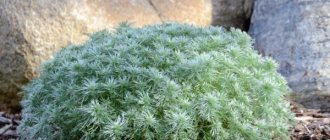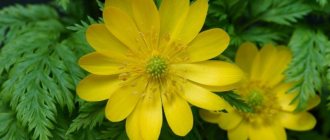Author: Natalya Category: Garden plants Published: November 08, 2017Republished: February 09, 2019Last edits: November 04, 2020
- Growing conditions
- Tamarix tetrandra
Tamarix (lat. Tamarix), or tamarisk, or comb is a type genus of small trees and shrubs of the Tamarisk family, numbering more than 75 species. These plants are also known under the names “God’s tree”, “bisernik”, “comb”, “zhidovilnik”, “Astrakhan lilac” and “jengil”. The scientific name of the plant comes from the toponym of the Tama-riz River in the Pyrenees - now called Timbra. Representatives of the genus are found in semi-deserts and deserts, on salt marshes and solonetzes, as well as in the sand dunes of Africa, Asia and southern Europe. For example, 15 species of tamarix grow in the tugai forests of Central Asia; in the Caucasus, plants rise to a height of 600 m, and in the mountains of Central Asia - up to 2000 m above sea level. In culture, the tamarix shrub is grown as a sand-fixing and ornamental plant.
Planting and caring for tamarix
- Flowering: depending on the species, but usually in April-May.
- Planting: best in early spring, but possible during leaf fall.
- Lighting: bright light or partial shade.
- Soil: any well-drained soil.
- Watering: the first 2-3 weeks after planting - abundant and frequent. Mature plants require moisture only during periods of prolonged drought.
- Feeding: in early spring - with a solution of organic fertilizer, and in summer, foliar feeding is carried out with potassium-phosphorus fertilizer and solutions of microelements.
- Pruning: sanitary, thinning and rejuvenating - in early spring, before the start of sap flow, or after flowering.
- Reproduction: seeds and cuttings.
- Pests: practically not affected.
- Diseases: resistant, but may suffer from root rot due to excessive moisture.
Read more about growing tamarisk below.
Sanitary and planned pruning of Tamarix
In order for tamarix to look perfect against the background of other garden plants, it needs pruning. To do this, remove elongated and weak shoots. As a result, the plant takes on a decorative shape.
When sanitary pruning tamarix, thickened areas of the bush are cleared. Thanks to this, mold does not form in the bushes and its condition improves.
Shoots with darkened bark should be immediately removed from the crop.
Botanical description
Tamarix are graceful deciduous or evergreen shrubs. Often among them there are bush-like trees with a height of 1.5 to 12 m with a trunk thickness of up to 50 cm. The crown of tamarix is formed by twig-like shoots, densely dotted with scale-like alternate miniature leaves of a bluish-green, emerald or dark green hue. Small pink or white tamarisk flowers form large racemes or panicles. Before the flowers open, the bud-covered plant looks as if it has been studded with beads. During the flowering period, tamarix attracts bees because it is an excellent honey plant. The fruit of Tamarix is a pentagonal-pyramidal multi-seeded capsule with small seeds.
The Tamarix plant is distinguished by drought resistance and extraordinary vitality. It adapts perfectly to the gas pollution of large cities, and planting and caring for tamarisk will not cause trouble even for a lazy gardener.
What kind of flower is "tamarix"
Tamarix is a small tree-type shrub from the Tamarix family of the same name. It has thin arched branches with reddish-brown bark, can reach a height of 4 m and higher, but more often it grows only up to 1.5 m. In spring, tamarisk shoots are covered with racemose inflorescences with flowers of white, pale pink and pale lilac. Tamarix leaves are lanceolate, bluish-green, the crown is spreading and very light and delicate.
In total, there are more than 70 plant species, but in Russia, planting and caring for the four-stamen tamarisk and several other varieties are most often considered.
Winter hardiness of Tamarix
In general, the frost resistance of tamarix, or beaded plant, is considered very high. Some species can withstand temperatures down to -50 °C, although in this case the plant will need shelter. Any type of plant can easily tolerate temperatures dropping to -17-20 °C; for this reason, the shrub is actively grown even in the northern regions of the country.
How and when does tamarisk bloom?
The specific timing of flowering depends on the type of shrub. But on average, flowering occurs in April or May. A unique feature of tamarix is the ability to bloom up to 3 times per season; inflorescences on the bush can also bloom in mid-summer and early autumn.
Tamarix inflorescences are long, up to 15 cm in each raceme, and they consist of small flowers of white or soft pink color. The buds, which have not fully blossomed, slightly resemble large beads, hence the second name of tamarix. The blooming beaded flower is a bit like a lilac, but its crown is more openwork and spreading, and the clusters of inflorescences are thinner and longer.
How fast does Tamarix grow?
Bisernik is a shrub with very fast growth, not least of which is due to its popularity in landscape design. Over the course of a year, tamarix can grow up to 1 m. The roots of the shrub also grow very quickly; they can reach a meter in length even when the height of the plant itself does not exceed a few centimeters.
Advice! Photos of growing and caring for tamarix show that it is very convenient to use in artistic compositions. You don’t have to wait long for the result; tamarix very quickly acquires the required size and becomes fully decorative.
Planting tamarix in open ground
When to plant
Tamarix seedlings are planted in early spring or during leaf fall, but spring planting is preferable. Tamarisk needs well-drained soil, but the plant does not have any special requirements for its composition: it grows even in heavy clay, provided that peat and humus are added to the hole during planting. Tamarisk is also undemanding when it comes to lighting, but grows better in well-lit areas.
- Smoking tobacco: cultivation, collection and storage
When choosing a place for tamarisk, think carefully about everything, since its thin, long roots do not tolerate transplantation very well.
How to plant
A pit for tamarisk is dug 60x60x60 cm in size. A layer of drainage material (expanded clay, broken brick, pebbles or crushed stone) 20 cm thick is placed on its bottom, a layer of wood ash with humus is placed on top of the drainage, and then the hole is filled 2/3 with a fertile mixture earth, sand and peat in a ratio of 2:1:1.
The shoots of the seedling are cut off before planting, leaving no more than 3-5 cm from each, after which the seedling is lowered into the planting hole, its roots are straightened and the remaining space is filled with a mixture of the composition described above. The surface around the seedling is compacted and watered abundantly. After planting and watering, the neck should be at soil level.
Protecting tamarix from pests and diseases
Tamarix is highly resistant to diseases and pests. Defeat can occur if agricultural practices and plant growing conditions are violated. More often, shrubs become infected with fungal infections due to waterlogging of the soil due to prolonged rainfall or excessive watering. Stems and leaves damaged by the disease must be removed. Treat the tree and the soil around it with a fungicide (Skor, Quadris, Fitosporin).
Pests on shrubs can come from other infected plants. It can be:
- spider mites;
- scale insects;
- scale insects;
- aphid.
You can get rid of parasitic insects using insecticides:
- Aktara;
- Aktellik;
- Fufanon;
- Fitoverm;
- Karbofos.
Caring for tamarisk in the garden
Growing conditions
For the first 2-3 weeks after planting, the tamarisk seedling should be protected from the sun and watered regularly. When leaves appear on the plant, the shading is removed and watering is done less frequently. To retain moisture in the soil for as long as possible, the plant’s trunk circle needs to be mulched with some organic material. Adult tamarix are watered only during prolonged drought, but if it rains in the summer, do not moisten the soil around the plant at all. After watering or rain, remove the weeds that appear in the tree trunk circle and lightly loosen the soil.
Tamarix is fed in early spring, at the beginning of the growing season, with organic matter, and in the summer it is treated on the leaves with potassium and phosphorus fertilizers.
The plant's winter hardiness allows it to be grown in areas with a fairly cool climate, so tamarix has long been not uncommon in the Moscow region or the Urals. However, if weather forecasters say that in winter the temperature can drop to -28 ºC, even the most cold-resistant plants need to be covered: the tamarisk trunk is wrapped in polymer film or thick fabric, and the root zone is insulated with spruce branches or a thick layer of sawdust.
- How to Preserve Tulip Bulbs Before Planting
Trimming
Tamarisk care includes crown formation. The plant tolerates pruning easily. It is best to carry it out in early spring, before the buds begin to swell. Old tamarisk branches with short growths are cut into a ring, but within a month they will give rise to young shoots, and the crown of the bush will again turn into a lush hat. Rejuvenating pruning of tamarisk is done on a strong branch located as close as possible to the base of the bush. Make sure that the growth of tamarisk shoots does not weaken, as this will be followed by a reduction in the number and length of the inflorescences. When the growing season begins and the degree of frosting of branches and shoots becomes visible, prune them back to healthy wood.
You can also prune after the tamarix has finished blooming: to give the crown a well-groomed, neat appearance, remove all wilted inflorescences and very elongated shoots. By pruning, try to give the bush greater stability so that you do not have to tie the branches to supports.
The crown of tamarisk thickens easily, so it must be thinned out regularly, removing some of the branches.
Pests and diseases
Pests hardly bother tamarisk. There have been cases when they moved onto the bush from a neighboring plant, but in order to get rid of them, one treatment of the tamarisk with an insecticide solution is enough.
The situation is worse with fungal diseases: they easily infect the plant during the rainy season. Affected shoots and branches must be ruthlessly cut off, and the plant and the soil around it must be treated with a fungicide solution.
Description of the plant
Tamarix is a small perennial bush or tree that belongs to the Tamariskaceae family. The culture grows almost everywhere, and in many countries it has its own popular name. Tamarix is most often called comber, tamarisk, and beadweed. The names determine the appearance of the crop, which tamarix acquires during flowering. Based on the species, beaded plants with evergreen leaves are often found, less often deciduous species.
The plant is a low crop, growing in the form of a tree or a lush bush, not exceeding 5 m in height. The tree trunk rarely reaches half a meter in diameter. The peculiarity of the plant is the formation of the crown, which consists of small branches and stems, as well as coarse shoots.
The roots of the comb are spreading long roots, part of which is located under the top layer of soil, and the other part goes inside the soil. One trunk or several branches extend from the base of the root neck, forming a crown. The tree trunk begins to branch at a distance of about half a meter from the ground. Shrubs form lateral branches almost at the very base of the soil. The comb forms a luxurious crown, consisting of many side branches and shoots, which are covered with dark green foliage.
All branches and shoots are completely covered with alternate leaves, which have a needle-like structure. The leaves are very small, not exceeding 5 mm in length. Mature plants are completely covered with scaly leaves that fit tightly to the branch. There are varieties that produce emerald, bluish foliage. There are no stipules on this plant. On the surface of the foliage you can find small depressions, which are glands for secreting salts.
The majority of tamarisk species bloom with bisexual flowers, and only one species is dioecious. The inflorescences are very small, not exceeding half a centimeter in size. Inflorescences are formed on twigs, completely covering the shoots and twigs, forming a dense brush or panicle. The flowers in the inflorescence have 4-5 petals; the flowers are round and ovoid in shape. The culture blooms with violet or purple flowers. There are varieties with white or red buds. Unopened tamarix buds are compared to beads strewn on the surface of the shoots. During the flowering period, the entire crop becomes the same shade, due to the density and abundance of inflorescences. Different varieties of comb flower bloom at different times. Early varieties begin to bloom in May, later ones in mid-summer.
After flowering, fruits are formed on the shoots - achenes, inside of which there are small straight seeds. The length of the seed is about half a centimeter. After ripening, the capsules open and the seeds are carried by the wind to various places. The seeds are not highly survivable.
Reproduction of tamarix in the garden
Tamarisk is propagated by cuttings and seeds, but experts recommend not wasting time on experiments with generative propagation, since the vegetative method gives more reliable and faster results.
Cuttings are carried out in early spring: semi-lignified cuttings 7-10 cm long and 1 cm thick are cut from the shoots, their lower cut is dipped in a root-forming solution and planted at an angle in a box with a light substrate (garden soil and sand in equal parts). Place a transparent dome on top of the box or cover each cutting with a glass jar. You will know that rooting was successful when young leaves appear on the cuttings. Rooted cuttings are planted in open ground in May, but they must be covered for the winter. Next spring, the seedlings that have overwintered in the garden and become stronger can be planted in a permanent place.
- Chickweed: cultivation, properties, types
To be safe, you can first hold the cuttings in water, and as soon as they form roots, the cuttings are planted in the ground and covered with jars.
If you nevertheless decide to grow tamarix from seeds, keep in mind that the seed material of this plant very quickly loses its viability, and in the middle zone the seeds rarely ripen at all. Sowing is carried out without preliminary stratification along the surface of the substrate. There is no need to plant the seeds. The container with the crops is placed on a tray with water. When the seedlings grow up and become stronger, they are planted in a school for growing. They must be covered for the winter. Tamarisk seedlings are transplanted to a permanent place after a year or two.
Tamarix - planting
Planting a full-fledged shrub seedling requires special technology. Planting and caring for Tamarix includes the following steps:
- To speed up the rooting process, use rooting stimulants (Kornevin, Heteroauxin - soak the cuttings in them, according to the instructions).
- Prepare the soil on the site - loosen it, add humus.
- Dig a hole, the depth of which corresponds to the length of the roots, the width is 80-100 cm.
- Add a little sand, moisten it with water, and insert the seedling into the hole.
- Sprinkle with soil and compact it, water again.
Types and varieties
Of the more than 70 species of tamarisk, the most winter-hardy plants are most often grown in cultivation.
Tamarix tetrandra
grows in Crimea, Greece, Asia Minor and the southeast of European Russia. This is a large shrub from 5 to 10 m high with brownish-red arched branches. The leaves on the branches are emerald green, lanceolate or ovate-lanceolate, narrowed towards the base, with a beak-shaped pointed apex. Flowers from white to light pink are collected on side shoots in racemes. Flowering begins in April-May. The species is drought-resistant and durable (lives up to 75 years).
Tamarix laxa
grows wild in Mongolia, Northwestern China, Afghanistan, Northern Iran and the lower reaches of the Volga. It can be a large and branchy shrub or tree up to 5 m high with spreading bare branches, green or gray. The leaves of this species are erect, ovate or oval-rhombic, pointed towards the apex and narrowed towards the base. Pink flowers are collected in dense brushes, which in turn form apical panicles. Flowering of this species lasts about 2 months. It is frost-resistant, drought-resistant, unpretentious to the composition of the soil and tolerates salinity well.
Tamarix gracilis
grows naturally in Kazakhstan, China, Siberia, western Mongolia, Ukraine and the south of European Russia. The shrub reaches a height of 4 m, it has thick, tapering branches covered with brownish-chestnut or gray-green bark and light fawn spots of cork along the shoots and in the axils of the leaves. On green shoots, pointed leaves are arranged imbricately; on one-year-old branches the leaves are larger, fawn, lanceolate. Spring simple clusters of bright pink flowers reach a length of 5 cm. Summer flower clusters, collected in large paniculate inflorescences, are somewhat longer - 7 cm. Tamarix graceful is a beautifully flowering and frost-resistant shrub that is of interest to landscape designers.
Branched tamarix (Tamarix ramosissima)
or five-stamen tamarix (Tamarix pentandra) grows on pebble shallows, river banks, and on terraces of river valleys in China, Iran, the Balkans, Mongolia, Central Asia, Moldova and Ukraine. It is an upright growing shrub up to 2 m high with thin greenish or bluish branches and annual reddish shoots. Its leaves are narrow, awl-shaped, with curved ends. Pink flowers are collected in dense complex racemes up to 5 cm long. Flowering begins in June and ends in September. The species is distinguished by its unpretentiousness to the composition of the soil, easily adapts to urban conditions, quickly recovers after freezing, but requires shelter for the winter. The most popular varieties are:
- Pink Cascade is a plant characterized by abundant and lush flowering;
- Rubra is a variety with purple-red flowers;
- Summer Glow is a shrub with bright crimson inflorescences.
Description of the graceful tamarisk
Tamarix is graceful. A large spreading shrub up to 4 m high consists of thick, drooping branches. They are covered with smooth brown-chestnut bark with light brown spots. Lanceolate or awl-shaped leaves vary in length even on the same plant. They fit tightly to the branches. It blooms in May, blooming racemose inflorescences 5-7 cm long. Bright pink flowers persist throughout the summer.
Tips for the garden, vegetable garden and flower garden
When to harvest onions planted before winter in 2021
Fighting the Colorado potato beetle with folk remedies: mustard and vinegar
Fighting the Colorado potato beetle on potatoes - preparations
The name of the bush tells about its origin. Tamarix comes from the name of the Tama-riz river in the Pyrenees, now the river is called Timbra. About 75 species have been described that form light thickets and grow everywhere from India to Southern Europe. Small bluish-green leaves (often called “scales”) grow densely on thin twig-like shoots. Racemose inflorescences are formed from small white or pink flowers.
Before flowering, the inflorescences, consisting of buds, look like a scattering of beads and look very decorative.
The plant is deciduous or evergreen. This is an excellent honey plant that attracts bees to the garden during the flowering phase. It is drought-resistant, frost-resistant, and tolerates gas pollution of city streets.
Tamarix in landscape design
Tamarisks are used in landscaping for group compositions, trimmed hedges and as tapeworms, for example, as a blooming “fountain” in the center of a green lawn. Low bushes and tamarisk trees go well with conifers - junipers, thujas, dwarf spruces. Tamarix harmonizes with barberry, lilac and jasmine.
Some evergreen species of the genus can even be grown indoors. Tamarisks are used in forest plantations, on saline soils, in semi-deserts and deserts, and to stabilize sliding banks and shifting sands.
Application in landscape design
Tamarix are used in single and group plantings, as a background in mixborders, and in hedges. They will hide a nondescript building on a summer cottage, decorate the local area, and fit perfectly into the surroundings of a flower garden or a composition of fruit trees. Cut branches at different stages of flowering look great in compositions with other crops, in separate bouquets.
Species cultivated in Russia: T. gracilis, T. tetrandra, T. ramosissima, T. Meyeri, T. laxa willd ), tamarix or small-flowered comb (T. parviflora).
Planting shrubs
Planting tamarisk is not hard work. First, choose the right place. It should be well lit, groundwater should not lie next to the rhizome. We can immediately say that areas that are in the shade are not suitable. The soil chosen is fertile, rich in humus. On poor soils, the shrub will grow and develop, but not as quickly as we would like.
After selecting the soil, prepare a hole for planting. Its depth should be about 50-60 cm. Drainage is made at the bottom and covered with humus. The drainage composition includes small pebbles and expanded clay. Then he will be perfect.
It is best to plant seedlings . They adapt faster and begin to grow faster. Before planting, young shoots are shortened, and the bush itself is planted in a hole, having first straightened the roots. Then everything is covered with a layer of earth and watered. It is recommended to compact the soil. You shouldn’t give the young plant a lot of sun right away; it should be shaded for a while.
Planting takes place in early spring. A necessary condition is to carefully select planting material. You should take very young seedlings, as adults may not take root. You can already understand that this process does not require special preparation or expenditure of time and effort. Every gardener can handle planting.
Variety of species
It is not difficult to pollinate any tamarisk varieties and cross them with one another. For this reason, there are a large number of transitional species of this shrub.
It is difficult to single out the main varieties among this variety, but in ornamental gardening the most popular are:
Do you know that:
it is practically not afraid of frost, and has all the best characteristics of combs.
You can buy Tamarix seedlings at special city and rural fairs and exhibitions that take place in early spring in Russia.
How to plant and grow tamarix
The main difference between these shrubs is their absolute undemandingness to soils.
. However, they grow best in well-drained soil; they love abundant watering, but do not tolerate stagnant water at all. Based on this, plants need to be planted in open, sunny hills, and not in wet lowlands. If the site has heavy clay soil, then it is best to remove the turf at the planting site and replace the soil with more fertile soil.
The main thing in caring for Tamarix varieties is periodic thinning
bushes, removing old shoots that have finished flowering. Two or three times during the entire flowering period, plants must be sprayed with protective compounds against pests and possible diseases. Frozen branches need to be pruned in the spring, so they will give new growth faster.
Advice!
In order to prevent the tamarisk bush from becoming bare over time, after five years it is necessary to completely trim its branches to the very base, that is, “plant it on a stump.” The comb plant is planted with seedlings obtained from cuttings, twigs or seeds. The best option is to purchase seedlings of zoned varieties from a local nursery.
Growing tamarix from seeds at home
Tamarix seeds photo
The seeds remain viable for only 4 months after ripening, so plant them fresh.
- Prepare a container with fertile, loose soil mixed with a significant amount of sand. There must be drainage holes in the bottom of the container.
- Plant the seeds shallowly, up to 1 cm. Sow as little as possible so as not to break through later: the distance between plants needs at least 3-4 cm.
Tamarix from seeds photo shoots
- When the seedlings grow to 5-6 cm in height, plant them in separate cups.
- Grow seedlings at room temperature and maintain moderate humidity. This must be done for two years.
- In the spring and summer, take the pots with the plant outside, and in winter be sure to return them to the warmth.
- Tamarix can be planted in open ground along with a lump of earth in the third year of life in the spring.
Vegetative propagation of Tamarix is the most popular: cuttings take root easily, giving 100% survival rate.
Diseases and pests
Tamarix very rarely gets sick. Insect pests rarely eat its leaves. Despite this, you need to know the necessary preventive measures and treatment methods.
Diseases most often occur due to improper care. This is especially true for abundant watering. Stagnation in the soil can cause disease. The root system begins to rot. In some cases, the flower dies, so prevention consists of proper care.
A symptom of a fungus that appears from excess moisture is brown spots on all parts of the bush. All affected branches should be trimmed and burned immediately. After this, the bush is thinned out.
For pests, such as aphids and mites, there are special preparations that can be bought at a gardening store. They are used strictly according to the instructions. People fight insects using a solution of laundry or tar soap. The entire plant is sprayed with it.
Most popular types
Tamarix has many species. Some of them are grown in temperate climates.
- Branched tamarix is very often found in front gardens. It is planted as a hedge. The soil is suitable for it and is salty. It is resistant to strong winds, but does not tolerate frost very well. Its flowers are pink and purple.
- Tamarix Meyer is a species that grows most often in southern latitudes. It does not tolerate severe frosts, but can live in dry areas in salty soils. It is not recommended to water it frequently. Its buds are pink.
- The graceful tamarix is a species that is rarely found in flower beds. It has high frost resistance. Its buds are pale pink.
Read also: Red tree hydrangea planting and care in open ground
Tamarix is a shrub that is easy to grow in garden plots. He is not picky about conditions, which is why he is popular.
Tamarix loose
In nature it grows in the lower reaches of the Volga, China, Iran, and Afghanistan.
Tamarix loose grows in the form of a large shrub or tree. The branches are bare, spreading, gray or green. The foliage is erect, oval-rhombic, pointed at the apex and slightly tapering at the base.
Tamarix loose pink flowers collected in panicles. It blooms for about two months.
The shrub tolerates salinity well. Tamarix is propagated by cuttings and seeds. Tamarix loose is used in landscaping in the south of Russia.
Features of the Tamarix bush
The graceful tamarisk shrub can be deciduous or evergreen. In addition to shrubs, there are also often trees that grow in a bushy manner; they have a height of 1.5–12 meters, and their trunk is never thicker than half a meter. The crown consists of twig-like stems, on which there is a huge number of alternately arranged small leaf plates similar to scales; their color can be emerald, greenish-blue or dark green. Large paniculate or racemose inflorescences consist of small white or pink flowers. Before flowering, when the bush is strewn with many unopened buds, it may seem as if it was decorated with beads. This plant is an excellent honey plant, so during the flowering period it attracts bees to the garden. The fruit is a pentagonal-pyramidal capsule, which is polyspermous and contains small seeds inside.
Tamarisk is a very hardy plant that is highly resistant to drought. This shrub can be grown even in a large city because it is resistant to gas pollution. Growing such a plant is not troublesome and very pleasant.
Tamarix is an openwork screen in the garden.
How to propagate tamarix
The beaded bush in a summer cottage looks so attractive that gardeners usually do not limit themselves to just one shrub. You can increase the population of tamarisk using vegetative methods; it is not necessary to buy new seedlings for this.
Seeds
To propagate tamarisk by seeds, it is enough to sow them evenly in a container with prepared soil mixture. There is no need to deepen the seeds or sprinkle them with soil on top. The container is placed on a tray filled with water, and then they wait for the first sprouts to appear; germination usually takes only a few days.
When the sprouts get stronger and reach a height of about 10-15 cm, they can be transferred to a temporary bed, and after 2 years they can be planted in a permanent place.
By layering
A simple and reliable way to propagate beaded flowers on a site is to use cuttings from an adult plant. On the mother bush, select one of the healthy branches located close to the ground, bend it down and dig it into the soil to a depth of about 20 cm.
The cuttings are fixed with wire or staples, and then watered during the warm season in the same way as the main plant. By the fall, the cuttings will give strong, long roots, and then it can be separated and replanted.
Read also: Hogweed burns photo, how to treat
How to propagate tamarix from cuttings
Propagating tamarisk by cuttings in the spring is the most popular and reliable way to increase the plant population. As preparations, several half-woody shoots about 10 cm long are cut from an adult mother bush at the very beginning of spring, and the lower cut is made oblique.
- The cuttings are treated with a root-forming solution along the lower cut and kept in water for a day.
- A sufficiently deep container is filled with a light but nutritious mixture consisting of fertile soil and sand mixed in equal quantities. You can also add peat to the soil mixture, which will accelerate the development of shoots.
- After a day, the cuttings are buried in the soil, watered abundantly and the container is covered on top with a glass dome or transparent film.
The container with the cuttings is placed in a warm and well-lit place. It will be possible to understand that the sprouts have taken root successfully by the appearance of young leaves on the cuttings. It will be possible to transplant the cuttings into the ground as early as May, first to a temporary bed, and a year later to a permanent place. With the help of cuttings, tamarix reproduces very well, problems usually do not arise, so even novice gardeners can cope with the task.











